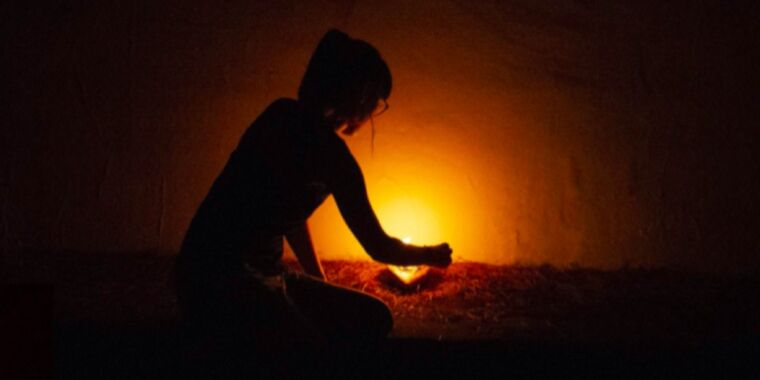
There is no way to definitively prove what those prehistoric cave artists intended, and therefore it's unwise to draw strong inferences about these being cinematic in nature, or to assume that this tells us anything about prehistoric artists' conception of time.
But his point about the importance of viewing cave paintings under the lighting conditions in which they were created and viewed in prehistoric times is sound.
Lighting sources could indeed hold vital clues to the different ways prehistoric peoples used caves, according to a new paper by a team of Spanish scientists, published in the journal PLOS ONE.
They conducted in situ experiments with three different kinds of Paleolithic lighting sources, in the hopes of shedding some light (pun intended) on what those various illumination methods might tell us about the emergence of "human symbolic and artistic behavior" in the form of cave art.
There are nearly 350 such prehistoric caves in France and Spain alone, including the oldest cave painting yet known: a red hand stencil in Maltravieso cave in Caceres, Spain, likely drawn by a Neanderthal some 64,000 years ago.(The oldest known depiction of an animal was discovered in 2018 on the island of Borneo in Indonesia, dating back 40,000 years.)Â The Spanish team chose to conduct their experiments at the Isuntza 1 Cave in Spain's Basque country, and selected two distinct spaces in particular.
The Spanish researchers chose lighting types for their eight experiments based on known archaeological data: five torches tested in both spaces and the passage, as well as two stone lamps with animal fat, and a small fireplace, both tested just in the first space.For all the lighting experiments, the team measured how long the lighting source lasted (duration); the total amount of light reaching a specific surface or point relative to the human eye (illuminance, or lux); how much illumination was emitted in certain directions (luminous intensity); the minimum distance between the light source and total darkness (action radius); and luminance, which connects light intensity with the surface of the source.This makes the lamps better suited for lighting small cave spaces over a longer period, complementing the advantages of the torches.
In the virtual model, they conducted a spatial analysis of all three tested lighting sources.
Torches did prove to be a good lighting source for accessing that space, however, with an estimated travel time of 38.39 minutes—in line with the measured duration of the torches.
But the more archaeologists learn about Paleolithic lighting sources, the more we will understand about how those lighting sources affect human perception in a cave environment, with implications for the emergence of cave art.
"Only with a large corpus of archaeological remains, including different types of lighting systems (and fuels), studied through an interdisciplinary approach, will it be possible to adequately reproduce Paleolithic light resources," they concluded in their paper, "Our experiments in Paleolithic lighting point to planning in the human use of caves in this period, and the importance of lighting studies to travel the activities carried out by our ancestors in the deep areas of caves.